#empress augusta Victoria
Text

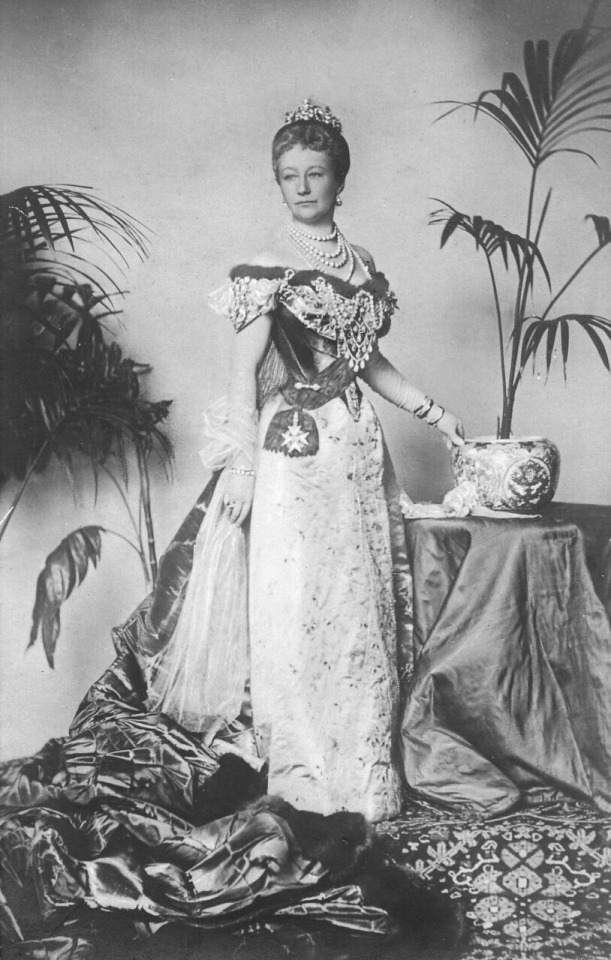
October 22 1858: The Birth of Kaiserin Augusta Victoria of Schleswig-Holstein
Augusta Victoria of Schleswig-Holstein was the eldest daughter of Frederick VIII, Duke of Schleswig-Holstein and Princess Adelheid of Hohenlohe-Lagenburg. Tragedy struck only a week after her birth when her elder brother died from illness. In 1860, her younger sister, Caroline Mathilda, was born. Who was regarded as prettier and a brighter personality than the chubby, serious, submissive Augusta Victoria. Soon Augusta’s mother would give birth to another boy, Gerhard, who died in infancy. Their next male heir and fifth child, Ernst Gunther, was a perfectly healthy baby boy. Augusta would have two other sisters, Louise Sophie in April 1866 and Feodora Adelaide in July 1874.
In her family, she was known affectionately as “Dona.” Augusta’s obedient nature was noted on early in her youth, even by her future mother-in-law Crown Princess Frederick. ‘It is strange how good some children are – and how little trouble they give,’ she wrote to her mother, Queen Victoria, when Augusta Victoria was nine years old. ‘Ada’s children are patterns of obedience, gentleness – the best of dispositions’. (1)
The thought of a match between Princess Augusta Victoria of Schleswig-Holstein and Prince Wilhelm of Prussia was contemplated ever since they were children, as noted by the prince (future Kaiser, ex-Kaiser) later in the future. But was never taken seriously until after the prince was rejected by Princess Elisabeth of Hesse and by Rhine. Perhaps, Wilhelm was seeking for a rebound in Dona and it was a success. As the couple married on the 27th of February 1881. The marriage has been regarded to be happy but not without struggle. As Wilhelm quickly grew bored at his new wife’s longing for a simple domestic lifestyle, having multiple affairs throughout the years. And in the beginning only saw Dona as a broodmare. It was only after an ear infection gone bad, where Augusta stayed by Wilhelm’s side throughout the duration of it did he start to see her in an adjusted light, but continued to be unfaithful to her.
She bore him seven children:
Wilhelm, German Crown Prince, Crown Prince of Prussia (1882-1951)
Prince Eitel Friedrich (1883-1942)
Prince Adalbert (1884-1948)
Prince August Wilhelm (1887-1949)
Prince Oskar (1888-1958)
Prince Joachim (1890-1920)
Princess Viktoria Louise of Prussia (1892-1980)
Her days as Empress, she was regarded by the court as a prudish, a stickler for rules who punished anyone for the simplest gesture she deemed to be “immoral.” She was deemed by many as unremarkable and plain with a gaudy and tacky sense of fashion. With Nicholas II remarking to his mother, the Dowager Empress. That she ‘did her best to be pleasant but looked awful in sumptuous gowns completely lacking in taste; in particular the hats she wore in the evening were frightful.’
Though as overbearing and a nuisance as she was in public life and a part of her private life, by some family members, such as Empress Frederick (with whom she had a very heated feud with and who Augusta enjoyed snubbing frequently) who wrote to her daughter, Sophie, she was characterized as: ‘very grand and stiff and cold and condescending at first, but became much nicer afterwards. Perhaps it was also partly shyness.’ and by her younger sister, Louise Sophie that when she was ‘not bowing to the will of her autocratic husband she was easy and indulgent’. “Her cousin Alice of Albany, who was sometimes mildly critical of her older relations, found her ‘most affable and kind’.”(1)
She was her husband’s biggest supporter throughout everything (for better and for worse) and was crushed when she was stripped of her titles as German Empress and Queen of Prussia after the war. Her health, which was already declining ever since the 1890s (causing her to miscarry twice) went down a rapid decline in the 1920s. And it had worsened when she had heard of the news of the death of her youngest son, Prince Joachim. She passed away on the 11th April 1921, in spite of her personal flaws, she was a beloved Empress by the German people and her popularity outshined her husband’s. Thousands lined up to see her off, where she would be buried at the Temple of Antiquities in the gardens near the New Palais in Postdam. Her husband, the ex Kaiser Wilhelm II was forbidden to cross into Germany to see his wife off for the final time.
Her room in Huis Doorn was soon turned into a shrine dedicated to the late Empress. With Wilhelm ordering for the room to regularly be cleaned with flowers and a cross draped over the bed. “Once a week, for the rest of his twenty years, he would retire there on his own, to go and mourn her memory.“ (1)
Wilhelm adhered to his late wife’s wishes for him to marry someone else when she was gone. When only a year later he would marry Princess Hermine of Reuss. He passed away in June of 1941, at age 82, 20 years after her passing.
Source : The Last German Empress
#monarchy#kaiser wilhelm ii#german empire#german monarchy#imperial germany#wilhelm ii#kaiserin augusta victoria#empress augusta victoria#royal birthdays#THIS TOOK ME AN HOUR😭#and her bday is about to end in 8 minutes#i was hella procrastinating lmao#happy birthday to Dona ig#german royalty#german royal family
25 notes
·
View notes
Text
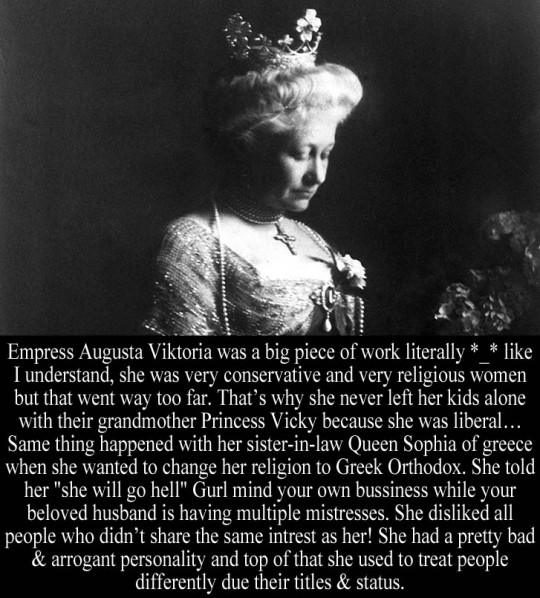
“Empress Augusta Viktoria she was a big piece of work literally _ like I understand, she was very conservative and very religious women but that went way too far. thats why she never left her kids alone with their grandmother Princess vicky because she was liberal… same thing happened with her sister-in-law Queen sophia of greece when she wanted to change her religion to greek orthodox. she told her "she will go hell" Gurl mind your own bussiness. While your beloved husband is having multiple mistresses. she disliked all people who didnt share the same intrest as her! she had a pretty bad & arrogant personality and top of that she used to treat people differently due their titles & status..” - Text & Image Submitted by abigaaal
35 notes
·
View notes
Photo
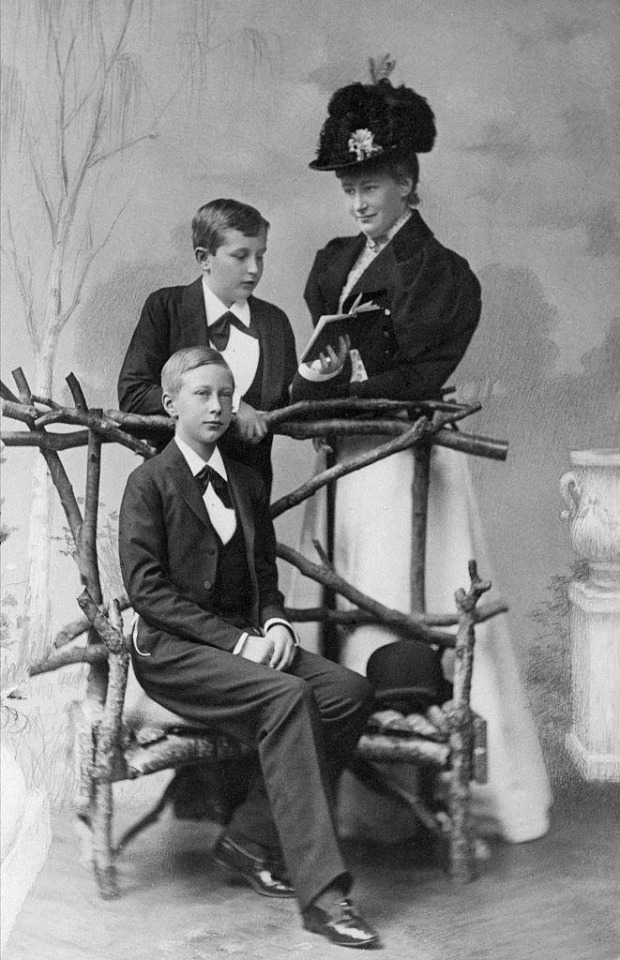
Empress Augusta Viktoria with her two eldest sons Crown Prince Wilhelm and Prince Eitel Friedrich. 1896
#Empress Augusta Victoria#hohenzollern#prussian royal family#Crown Prince Wihelm#Prince Eitel Friedrich#1890s
21 notes
·
View notes
Photo

#Empress Augusta Victoria#hohenzollern#prussia#germany#1890s#colorization#colorized#colorized photo#victorian
5 notes
·
View notes
Text
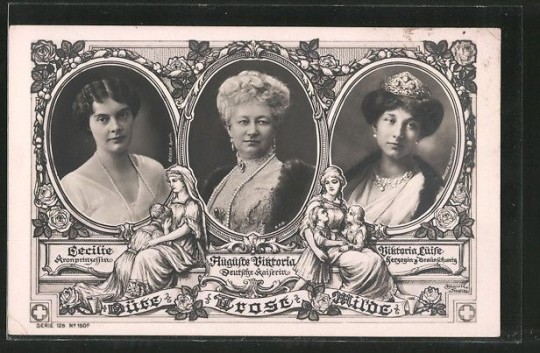
German Empress Augusta Victoria (Center) with her daughter Victoria Louise of Prussia, Duchess of Brunswick (right) and her daughter-in-law, Crown Princess Cecilie of Prussia (left)
#empress augusta viktoria of germany#crown princess cecilie of prussia#princess victoria louise of germany#german imperial family#prussian royal family#german history#prussian history#house of hohenzollern#house of hanover
50 notes
·
View notes
Note
might be such a random question but what did you think of the way Victoria brought in Victoria’s half sister in season 3? Did you have any thoughts on that? I thought it was an interesting choice! I wonder if that did happen.
Hi anon! That’s not a stupid question at all! For anyone that doesn’t know, this question is about Queen Victoria’s half sister Princess Feodora of Leiningen and how she made her “glorious” appearance in season 3 of ITV’s Victoria.
I honestly didn’t like her appearance at all. It ruined Victoria and Alberts relationship so much and I was just entirely triggered by her actions. She really was just a mischievous little scheming brat that like completely interrupted the show and like ruined everything for me. I’m pretty sure that this did indeed happened to an extent, but it definitely wasn’t portrayed accurately in the drama.
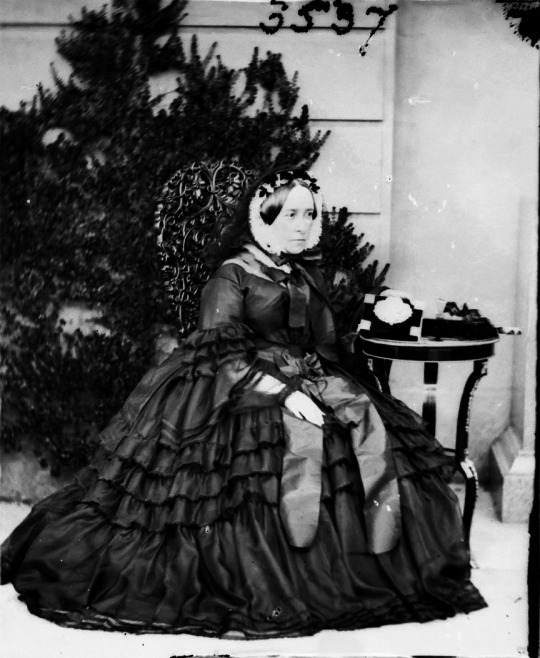
Also Fun Fact! Did you know that Empress Augusta Victoria of Germany (née Princess of Schleswig Holstein) was the Granddaughter of Princess Feodora through her daughter Princess Adelheid of Hohenlohe-Langenburg who was also featured on the show!
Thank you for asking!
#answered ask#Queen Victoria#victoria#period drama#princess Feodora of leiningen#princess adelheid of hohenlohe-langenburg#Empress Augusta Victoria of Germany#Princess Augusta Victoria of Schleswig Holstein#princess feodora
5 notes
·
View notes
Text

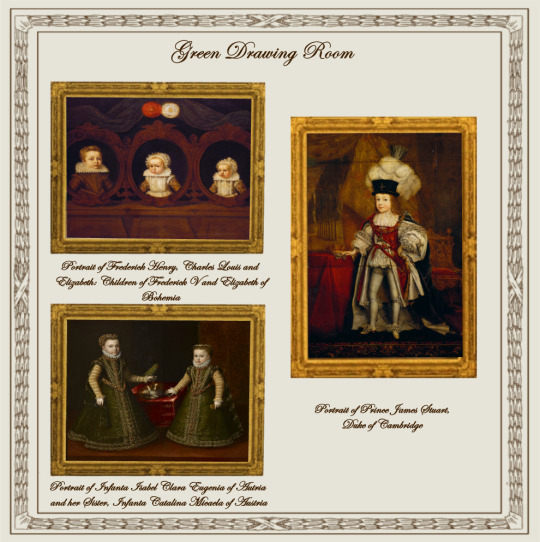
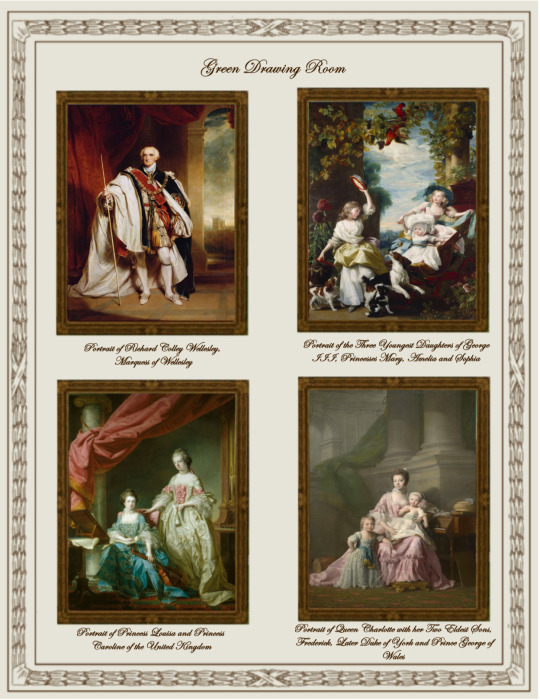
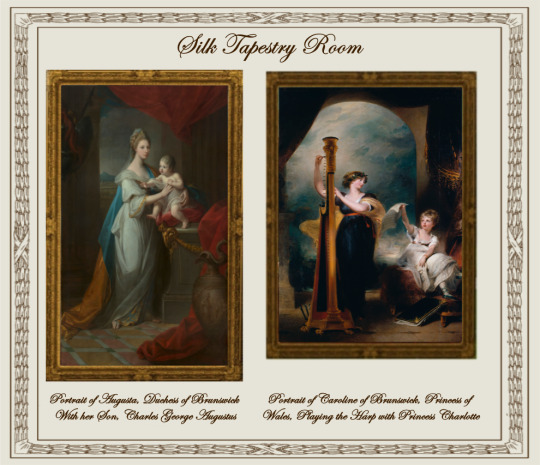
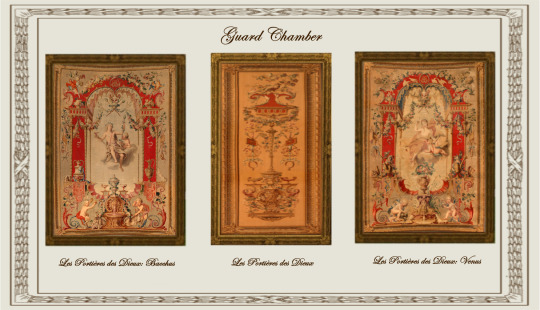

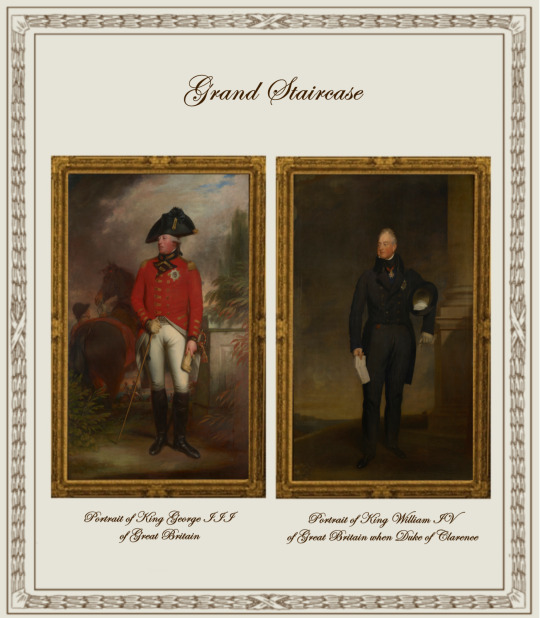
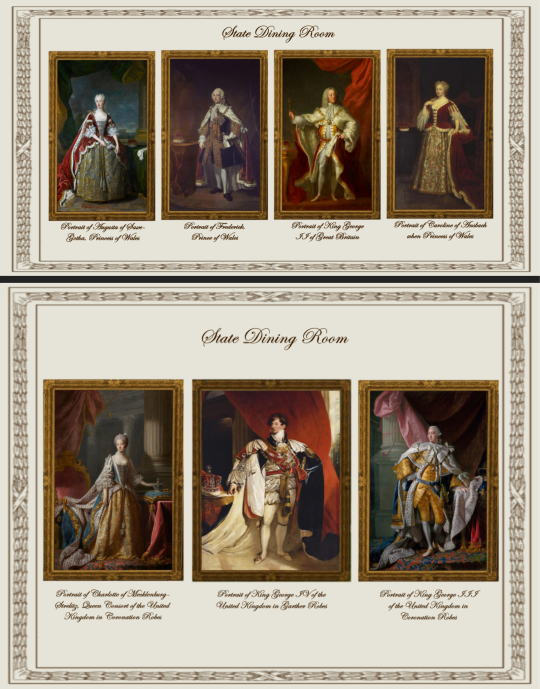
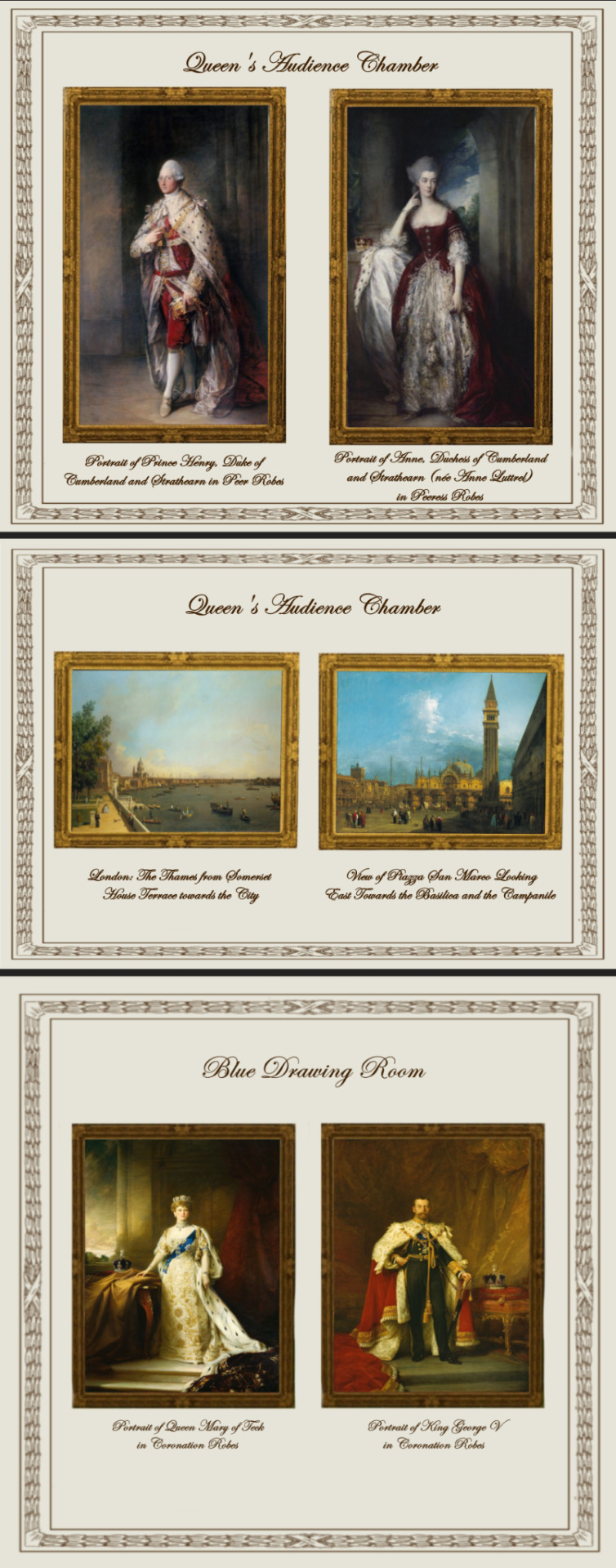
Paintings from Buckingham Palace: part I
A retexture by La Comtesse Zouboff — Original Mesh by @thejim07
100 followers gift!
First of all, I would like to thank you all for this amazing year! It's been a pleasure meeting you all and I'm beyond thankful for your support.
Spread among 13 occupied and historic royal residences in the United Kingdom, the collection is owned by King Charles III and overseen by the Royal Collection Trust. The British monarch owns some of the collection in right of the Crown and some as a private individual. It is made up of over one million objects, including 7,000 paintings, over 150,000 works on paper, this including 30,000 watercolours and drawings, and about 450,000 photographs, as well as around 700,000 works of art, including tapestries, furniture, ceramics, textiles, carriages, weapons, armour, jewellery, clocks, musical instruments, tableware, plants, manuscripts, books, and sculptures.
Some of the buildings which house the collection, such as Hampton Court Palace, are open to the public and not lived in by the Royal Family, whilst others, such as Windsor Castle, Kensington Palace and the most remarkable of them, Buckingham Palace are both residences and open to the public.
About 3,000 objects are on loan to museums throughout the world, and many others are lent on a temporary basis to exhibitions.
-------------------------------------------------------
This first part includes the paintings displayed in the White Drawing Room, the Green Drawing Room, the Silk Tapestry Room, the Guard Chamber, the Grand Staircase, the State Dining Room, the Queen's Audience Room and the Blue Drawing Room,
This set contains 37 paintings and tapestries with the original frame swatches, fully recolourable. They are:
White Drawing Room (WDR):
Portrait of François Salignan de la Mothe-Fénelon, Archbishop of Cambrai (Joseph Vivien)
Portrait of a Lady (Sir Peter Lely)
Portrait of a Man in Armour with a red scarf (Anthony van Dyck)
Portrait of Alexandra of Denmark, Queen Consort of the United Kingdom and Empress of India (François Flameng)
Green Drawing Room (GDR):
Portrait of Prince James Stuart, Duke of Cambridge (John Michael Wright)
Portrait of Frederick Henry, Charles Louis and Elizabeth: Children of Frederick V and Elizabeth of Bohemia (unknown)
Portrait of Infanta Isabel Clara Eugenia of Autria and her Sister, Infanta Catalina Micaela of Austria (Alonso Sanchez Coello)
Portrait of Princess Louisa and Princess Caroline of the United Kingdom (Francis Cotes)
Portrait of Queen Charlotte with her Two Eldest Sons, Frederick, Later Duke of York and Prince George of Wales (Allan Ramsay)
Portrait of Richard Colley Wellesley, Marquess of Wellesley (Martin Archer Shee)
Portrait of the Three Youngest Daughters of George III, Princesses Mary, Amelia and Sophia (John Singleton Copley)
Silk Tapestry Room (STR):
Portrait of Caroline of Brunswick, Princess of Wales, Playing the Harp with Princess Charlotte (Sir Thomas Lawrence)
Portrait of Augusta, Duchess of Brunswick With her Son, Charles George Augustus (Angelica Kauffmann)
Guard Chamber (GC):
Les Portières des Dieux: Bacchus (Manufacture Royale des Gobelins)
Les Portières des Dieux: Venus (Manufacture Royale des Gobelins)
Les Portières des Dieux (Manufacture Royale des Gobelins)
Grand Staircarse (GS):
Portrait of Adelaide of Saxe-Meiningen, Queen Consort of Great Britain (Martin Archer Shee)
Portrait of Augustus, Duke of Sussex (Sir David Wilkie)
Portrait of Edward, Duke of Kent (George Dawe)
Portrait of King George III of Great Britain (Sir William Beechey)
Portrait of King William IV of Great Britain when Duke of Clarence (Sir Thomas Lawrence)
Portrait of Leopold I, King of the Belgians (William Corden the Younger)
Portrait of Prince George of Cumberland, Later King George V of Hanover When a Boy (Sir Thomas Lawrence)
Portrait of Princess Charlotte Augusta of Wales (George Dawe)
Portrait of Queen Charlotte at Frogmore House (Sir William Beechey)
Portrait of Victoria of Saxe-Coburg-Saafeld, Duchess of Kent (Sir George Hayter)
State Dining Room (SDR):
Portrait of Charlotte of Mecklenburg-Strelitz, Queen Consort of the United Kingdom in Coronation Robes (Allan Ramsay)
Portrait of King George III of the United Kingdom in Coronation Robes (Allan Ramsay)
Portrait of Augusta of Saxe-Gotha, Princess of Wales (Jean-Baptiste Van Loo)
Portrait of Caroline of Ansbach when Princess of Wales (Sir Godfrey Kneller)
Portrait of Frederick, Princes of Wales (Jean-Baptiste Van Loo)
Portrait of King George II of Great Britain (John Shackleton)
Portrait of King George IV of the United Kingdom in Garther Robes (Sir Thomas Lawrence)
Queen's Audience Room (QAR):
Portrait of Anne, Duchess of Cumberland and Strathearn (née Anne Luttrel) in Peeress Robes (Sir Thomas Gainsborough)
Portrait of Prince Henry, Duke of Cumberland and Strathearn in Peer Robes (Sir Thomas Gainsborough)
London: The Thames from Somerset House Terrace towards the City (Giovanni Antonio Canal "Canaletto")
View of Piazza San Marco Looking East Towards the Basilica and the Campanile (Giovanni Antonio Canal "Canaletto")
Blue Drawing Room (BDR)
Portrait of King George V in Coronation Robes (Sir Samuel Luke Fildes)
Portrait of Queen Mary of Teck in Coronation Robes (Sir William Samuel Henry Llewellyn)
-------------------------------------------------------
Found under decor > paintings for:
500§ (WDR: 1,2 & 3)
1850§ (GDR: 1)
1960§ (GDR: 2 & 3 |QAR 3 & 4)
3040§ (STR, 1 |GC: 1 & 2|SDR: 1 & 2)
3050§ (GC:1 |GS: all 10|WDR: 4 |SDR: 3,4,5 & 6)
3560§ (QAR: 1 & 2|STR: 2)
3900§ (SDR: 7| BDR: 1 & 2|GDR: 4,5,6 & 7)
Retextured from:
"Saint Mary Magdalene" (WDR: 1,2 & 3) found here .
"The virgin of the Rosary" (GDR: 1) found here .
"The Four Cardinal Virtues" (GDR: 2&3|QAR 3 & 4) found here.
"Mariana of Austria in Prayer" (STR, 1, GC: 1 & 2|SDR: 1 & 2) found here.
"Portrait of Philip IV with a lion at his feet" (GC:1 |GS: all 10|WDR: 4 |SDR: 3,4,5 & 6) found here
"Length Portrait of Mrs.D" (QAR: 1 & 2|STR: 2) found here
"Portrait of Maria Theresa of Austria and her Son, le Grand Dauphin" (SDR: 7| BDR: 1 & 2|GDR: 4,5,6 & 7) found here
(you can just search for "Buckingham Palace" using the catalog search mod to find the entire set much easier!)

Drive
(Sims3pack | Package)
(Useful tags below)
@joojconverts @ts3history @ts3historicalccfinds @deniisu-sims @katsujiiccfinds @gifappels-stuff
-------------------------------------------------------
#the sims 3#ts3#s3cc#sims 3#sims 3 cc#sims 3 download#sims 3 decor#edwardian#rococo#baroque#renaissance#buckingham#buckingham palace#royal collection trust#wall decor
94 notes
·
View notes
Note
“I don't know Empress I think by now even the BRF doesn't want anything to do with that dukedom anymore. I doubt it'll be used after this”
I don’t think it’s fear. I think that they don’t want the historic correlation, indeed the negative historic correlation may be why Sussex was awarded to begin with.
After all the Duke of Clarence title is still mothballed.
I think the thought process behind the Duke of Edinburgh title not being hereditary (ie passed down to James Earl of Wessex) is that it will go to Prince Louis together with the Duke of Edinburgh awards. 
Does everyone know the story about the first Duke of Sussex? It's so wild and well worth a read. I really hope the title being given to Harry was epic foreshadowing.
Unlike Victoria, his (Prince Augustus) wedding broke regal rules with all the consequences that brought with it. In 1793, he secretly married Lady Augusta Murray and they went on to have two children, Augustus and Augusta. But the wedding had been in contravention of the Royal Marriages Act and was annulled. The couple parted in 1801 – the same year that Augustus became Duke of Sussex.
He married again, in 1831, to Lady Cecilia Buggin but as their wedding on May 2nd that year was in contravention of the Royal Marriages Act, his new wife was never called Duchess of Sussex. Not that Cecilia missed out completely. In the same year that Augustus gave his niece Victoria away, the young queen made her aunt by marriage Duchess of Inverness in her own right.
20 notes
·
View notes
Text
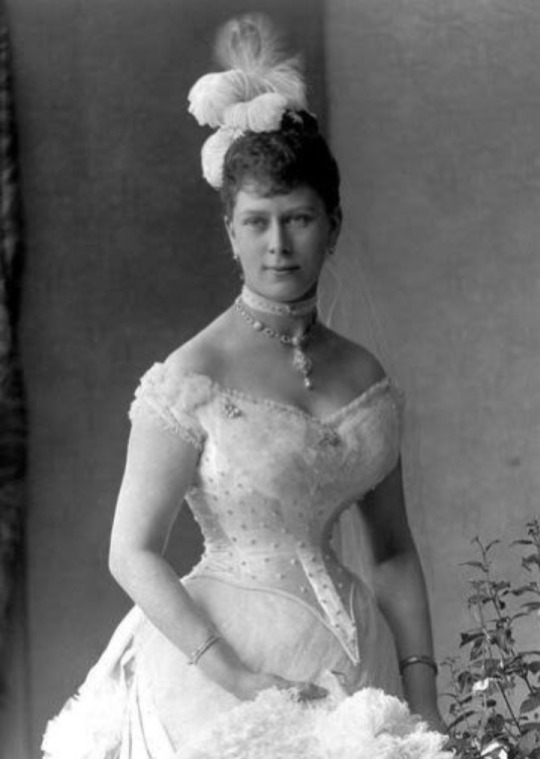
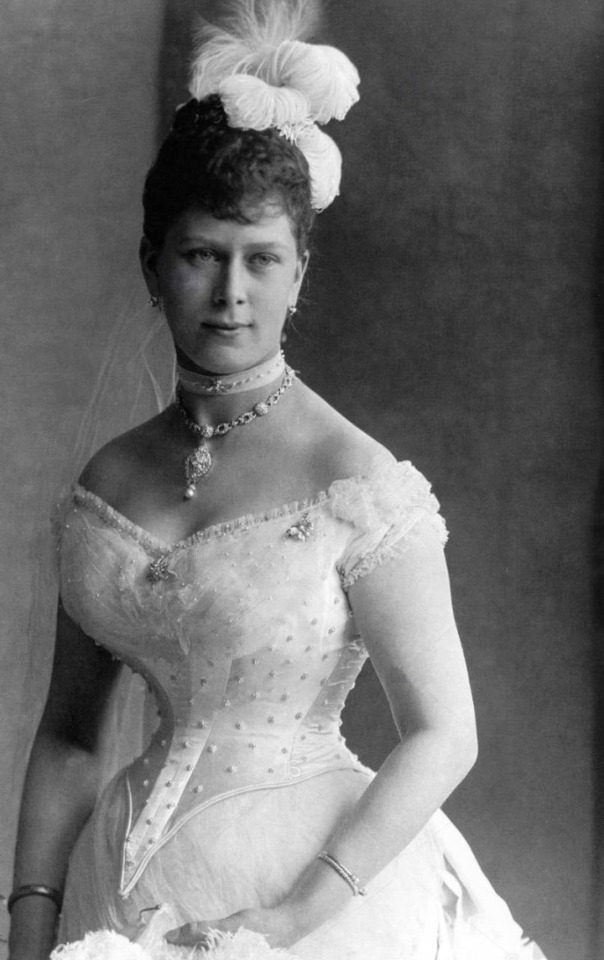
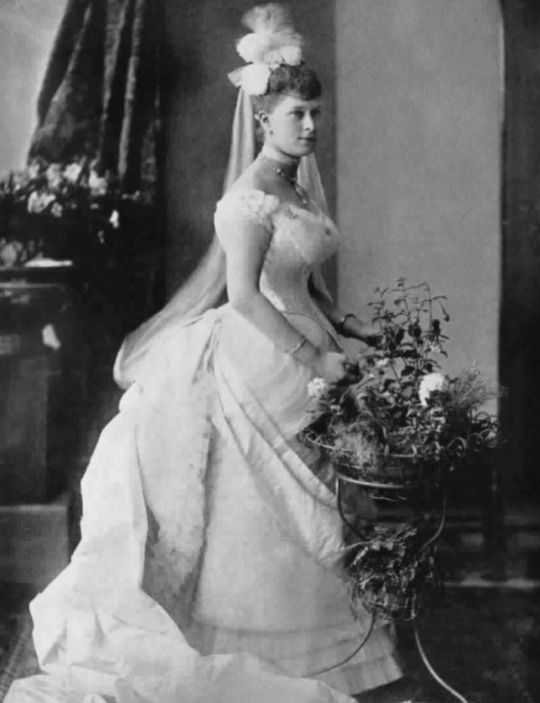
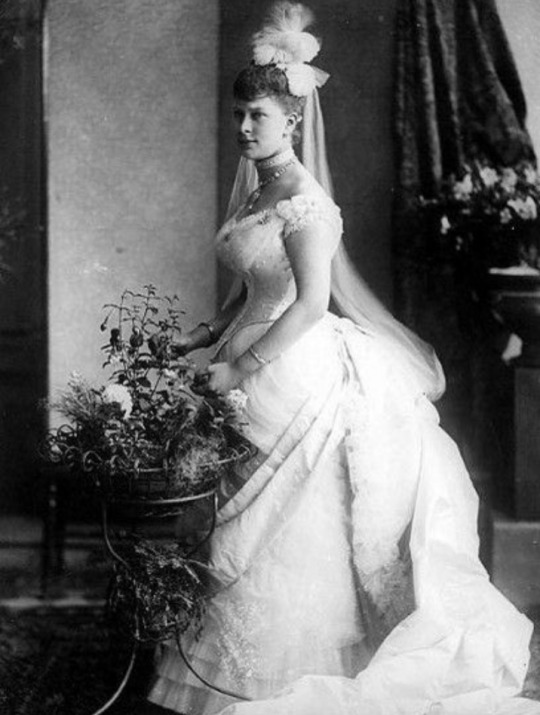
Princess Mary of Teck in her debut or coming out dress, 1886
—
Mary of Teck (Victoria Mary Augusta Louise Olga Pauline Claudine Agnes; 26 May 1867 – 24 March 1953) was Queen of the United Kingdom and the British Dominions, and Empress of India, from 6 May 1910 until 20 January 1936 as the wife of King-Emperor George V.
68 notes
·
View notes
Text


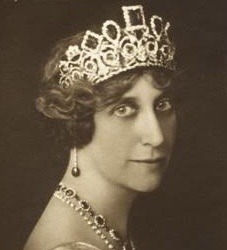
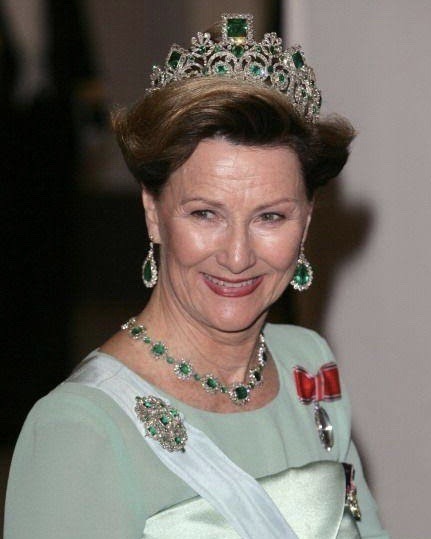
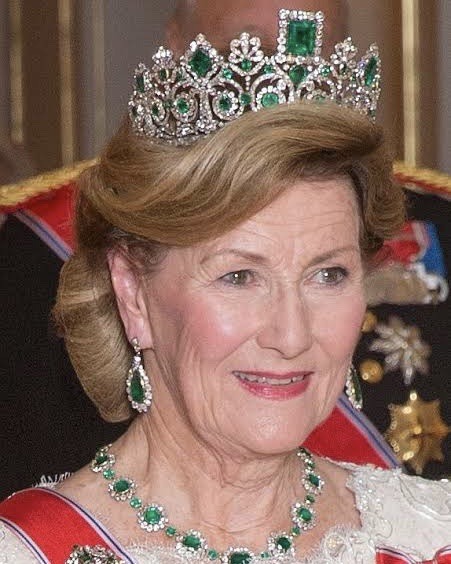
Royal Tiaras Highlights: The Norwegian Emerald Parure Tiara
The original provinance of this set is unknown. What is known is that at some point the parure was acquired by the Duchess of Leuchtenberg, who was born Princess Augusta of Bavaria, daughter-in-law to Empress Jos��phine of France.
When Augusta died in 1851, the parure was left to one of her daughters: Amélie, the Empress of Brazil. Amélie kept the jewels as her personal possesion until her death in Lisbon; since her only child, Princess Maria Amélia, had died two decades before, Empress Amélie’s jewelry weas left to her only living sister: Queen Joséphine of Sweden and Norway. Joséphine eventually left the emeralds to her daughter-in-law, Queen Sofia.
When Queen Sofia died in 1913, instead of leaving the set to Swede’s current queen, Victoria, she left to her daughter-in-law, Princess Ingeborg. When World War II broke out in Europe, Ingeborg gave the emerald parure to her daughter, Crown Princess Märtha of Norway, as she fled the country with her children on their way to America; the gems were meant to be sold in case the family found themselves in financial trouble. In 1945, when Märtha and her children returned home to Norway, they brought back the parure - intact.
Nodaways, Queen Sonja is the only woman in the Norwegian Royal Family who wears the emerald set.
via The Court Jeweler
#emeralds bc it's st pattys day#tiaras highlights#royal jewels#royal jewelry#royal tiaras#Norwegian Royal Family#nrf#queen sonja
40 notes
·
View notes
Text

~ "The Russian Pink Topazes.
One of the most spectacular suites in the Bernadotte vaults: The demi-parure features a necklace, a pair of earrings, and two brooches. As the name suggests, the jewels began their life in Romanov Russia. They were a gift from Empress Maria Feodorovna to her daughter, Grand Duchess Maria Pavlovna of Saxe-Weimar-Eisenach, to mark the birth of her daughter, Princess Augusta, in 1811. (Augusta was the grandmother of Queen Victoria of Sweden)." ~
2 notes
·
View notes
Text

#kaiser wilhelm ii#wilhelm ii#kaiserin augusta victoria#empress augusta victoria#german empire#imperial germany#german monarchy#prussian royal family
15 notes
·
View notes
Text

“Augusta Victoria was such an unlikable person, like she had it against everyone who didn’t think like her and would throw a fit when someone stood up to her. (Like her sister-in-law Sophie of Prussia) i mean, empress or not, i suppose you should have tolerance to other people’s opinions.” - Submitted by Anonymous
7 notes
·
View notes
Photo

Empress Augusta Victoria of Germany
7 notes
·
View notes
Photo
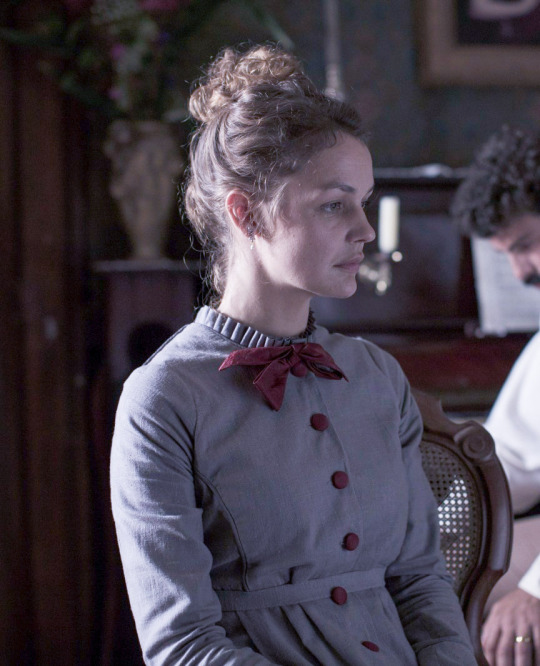

Luise Heyer as Maria Leopoldina of Austria, the Empress Consort of Brazil, Queen Consort of Portugal and Archduchess of Austria
Dona Maria Leopoldina of Austria (22 January 1797 – 11 December 1826) was born Caroline Josepha Leopoldine Franziska Ferdinanda of Habsburg-Lorraine in Vienna, Austria, Holy Roman Empire. She was the daughter of Holy Roman Emperor Franz II and Empress Maria Theresa of Naples and Sicily. In 1817 the Archduchess married Prince Dom Pedro of Braganza (12 October 1798 – 24 September 1834), heir to Portugal, later the Emperor Dom Pedro I of Brazil and King Dom Pedro IV of Portugal. The couple had 7 children: Queen Maria II of Portugal, Miguel, Prince of Beira, João Carlos, Prince of Beira, Princess Januária of Brazil, Princess Paula of Brazil, Princess Francisca of Brazil and Emperor Dom Pedro II of Brazil. On September 2, 1822 while she was the Acting Princess Regent of the Kingdom of Brazil in the absence of her husband Maria Leopoldina signed the Decree of Independence, declaring Brazil separate from Portugal. She died at age 29 in 1826 after a miscarriage. As Acting Regent Maria Leopoldina was the first woman to govern an independent Brazil, the first empress consort of the country, the first empress of the Americas and the first woman to govern an independent American country.
Victoria Guerra as Amélia of Leuchtenberg, the Empress Consort of Brazil and Duchess of Braganza
Dona Amélia of Leuchtenberg (31 July 1812 – 26 January 1873) was born Amélie Auguste Eugénie Napoléonne de Leuchtenberg in Milan, Kingdom of Italy. She was the daughter of Eugène de Beauharnais, Duke of Leuchtenberg and Princess Augusta of Bavaria, Duchess of Leuchtenberg. She was the second wife of Emperor Dom Pedro I of Brazil after their marriage in 1829 and they had one child, the Princess Maria Amélia of Brazil. After Dom Pedro I abdicated the Brazilian crown, Amélia accompanied her husband back to Europe. They held the titles of Duke and Duchess of Braganza until Pedro’s dead in 1834. Amélia died in Lisbon at the age of 60 in 1873.
A VIAGEM DE PEDRO | PEDRO, BETWEEN THE DEVIL AND THE DEEP BLUE SEA (2021). Dir. Laís Bodanzky
#a viagem de pedro#perioddramaedit#filmedit#movieedit#weloveperioddrama#worldcinemaedit#perioddramasource#onlyperioddramas#historicwomendaily#periodedits#braziliansource#cinematv#cinemapix#fyeahmovies#motionpicturesource#filmtv#filmtvdaily#userperioddrama#femaledaily#femalecharacters#flawlessbeautyqueens#historyedit#women in history#period drama#pedro between the devil and the deep blue sea#brazilian cinema#brazilian movies#mine#mine: edit#brazilian stuff
73 notes
·
View notes
Text
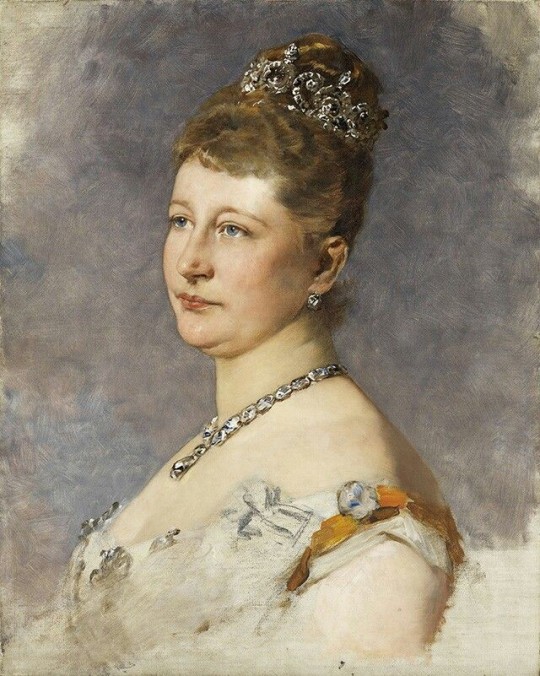
Augusta Victoria, German Empress and Queen of Prussia
#empress augusta viktoria of germany#german imperial family#german history#prussian royal family#house of hohenzollern
26 notes
·
View notes